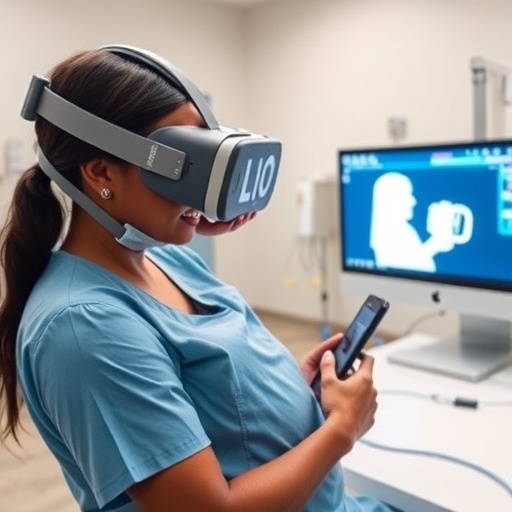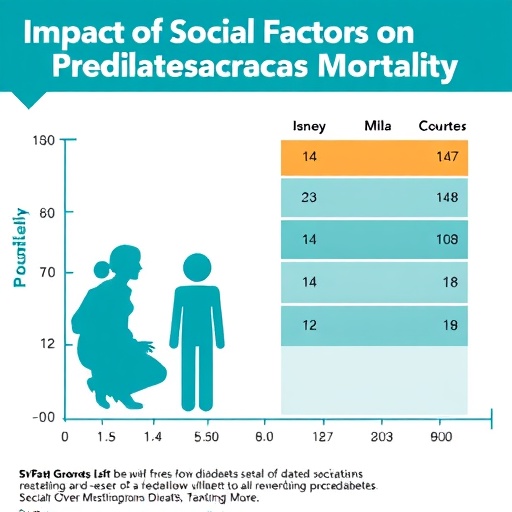Revolutionizing Midwifery Education Through Virtual Reality: A Decisive Breakthrough in Psychomotor Skills Training
In an age where technological advancements are permeating every field, the realm of education is no exception. Recent studies have increasingly demonstrated the efficacy of virtual reality (VR) in enhancing learning outcomes, particularly in professions that require a blend of theoretical knowledge and practical skills. One such area is midwifery nursing, where the need for proficient psychomotor skills cannot be overstressed. A pioneering study led by Ahmed, Mohamed, and Galal has brought to light the substantial benefits of integrating VR into midwifery education, showcasing that it not only bolsters the competency of students but also enriches their overall learning experience.
The complexity and delicacy of childbirth require midwives to possess exceptional psychomotor skills. Traditional educational methods often leave gaps in practical training due to constraints such as limited clinical exposure and varying patient scenarios. This is where VR steps in as a revolutionary tool. By immersing students in lifelike simulations, VR not only enhances their ability to perform complex procedures but also allows them to practice in a risk-free environment, thus preparing them better for real-world challenges they will face in clinical settings.
The study conducted by Ahmed et al. aimed to analyze the effectiveness of a VR-assisted learning model for midwifery students. Utilizing advanced VR technology, they created simulations that mimic real-life situations midwives face. These immersive environments allow students to engage in clinical scenarios that would typically require years of hands-on experience to master. Furthermore, the VR settings can be tailored to exhibit diverse situations, providing a breadth of exposure that is often unattainable in conventional training paradigms.
One of the noteworthy findings of the study was the marked improvement in students’ psychomotor competence when comparing performance before and after the introduction of VR training. Participants reported an increased sense of confidence and preparedness, signifying that VR is not merely a supplementary tool but a pivotal component of an effective educational strategy in midwifery courses. These results are particularly compelling considering the increasing demand for skilled midwives in healthcare systems globally.
Moreover, engagement levels among students were reported to increase, as VR enhances motivation and interest in learning. The interactive nature of VR allows students to explore scenarios at their own pace, enabling deeper understanding and retention of complex procedures involved in midwifery. This acquisition of knowledge and skills is vital in ensuring that future midwives can provide high-quality care to mothers and infants during critical moments.
Previous research has underscored the importance of psychomotor skills in medical education, particularly in fields that require precise movements and decision-making under pressure. VR technology bridges the gap between theoretical knowledge and practical application, thereby equipping nursing students with essential skills that translate to their future workplaces. The intricate manipulation of virtual tools aids in developing muscle memory and reflexes needed in real-life delivery scenarios, contributing significantly to student preparedness.
In addition to skill enhancement, the study emphasizes the positive impact of VR on emotional resilience and stress management. Midwifery students often face high-stress environments, particularly during clinical rotations. Engaging in virtual simulations allows them to experience various levels of high-pressure situations in a safe setting, thus reducing anxiety and improving their coping mechanisms. This emotional preparedness is crucial for effective decision-making in real-time, ultimately promoting better outcomes for both mothers and infants.
The implications of Ahmed et al.’s findings extend beyond individual skill enhancement. The integration of VR in midwifery education also poses systemic benefits to healthcare institutions by potentially reducing adverse outcomes associated with inexperience among new graduates. As healthcare systems strive to meet the growing needs of diverse populations, employing innovative teaching strategies like VR can significantly contribute to improving patient care quality and safety.
Looking ahead, the future of midwifery education appears poised for transformation with the adoption of VR technology. Educational institutions are beginning to take notice of the compelling evidence supporting the use of VR in training healthcare professionals, and this trend is likely to grow. The potential to refine VR scenarios to reflect current evidence-based practices and guidelines can further enhance the relevance of training for upcoming midwives.
Furthermore, the findings of this study may serve as a catalyst for broader discussions regarding the integration of technology in medical curricula. As VR evolves, the potential for incorporating artificial intelligence and machine learning into simulations could lead to even more sophisticated training modules that adapt to individual student needs, ensuring a personalized learning experience that maximizes competency acquisition.
In conclusion, the study by Ahmed, Mohamed, and Galal highlights an important milestone in midwifery education through the implementation of VR technology. By conclusively demonstrating improvements in psychomotor skills and boosting confidence among nursing students, this research paves the way for an educational transformation that could lead to enhanced maternal and neonatal care. As educational methodologies continue to evolve, integrating VR may not only reshape how we train midwives but also how we envision the future of healthcare education overall.
As we contemplate the advancements illustrated by this research, it is essential for educators, policymakers, and healthcare leaders to champion the adoption of VR training in nursing programs. Supporting the exploration of immersive learning solutions could catalyze a much-needed evolution in healthcare education and, by extension, patient care. The journey towards a more dynamic and effective education system is just beginning, and innovations like VR are at the forefront, ready to lead the way.
Subject of Research: Integration of virtual reality in midwifery education.
Article Title: Virtual reality-assisted learning: enhancing psychomotor competence in midwifery nursing students.
Article References: Ahmed, A., Mohamed, M., Galal, H. et al. Virtual reality-assisted learning: enhancing psychomotor competence in midwifery nursing students. BMC Nurs 24, 1304 (2025). https://doi.org/10.1186/s12912-025-03911-2
Image Credits: AI Generated
DOI: 10.1186/s12912-025-03911-2
Keywords: Virtual Reality, Midwifery Education, Psychomotor Skills, Nursing Students, Immersive Learning, Maternal Care, Healthcare Innovation.
Tags: benefits of VR in healthcare educationfuture of midwifery training technologieshealthcare education advancementsimmersive learning for midwivesimproving clinical skills with VR simulationsinnovative teaching methods for healthcaremidwifery education technologymidwifery student competency developmentpsychomotor skills enhancementrisk-free learning environments in midwiferytraditional vs virtual training in midwiferyvirtual reality in nursing training





